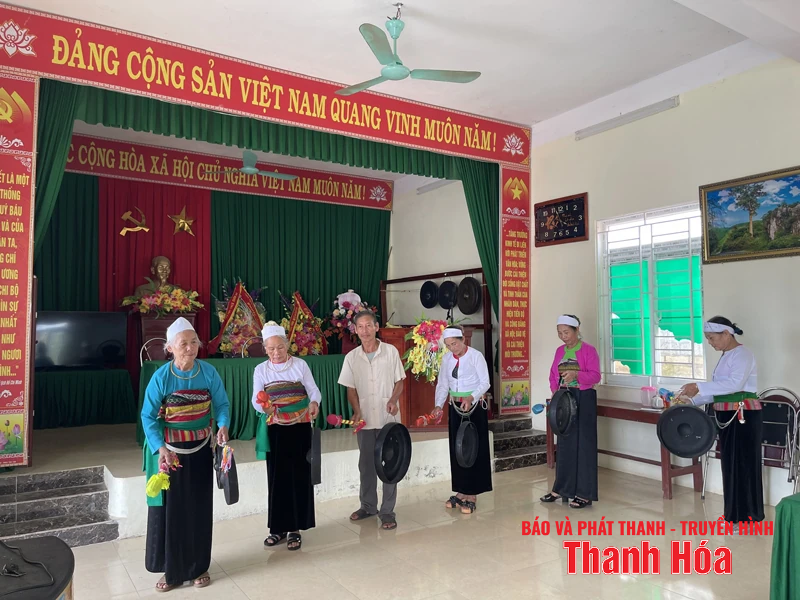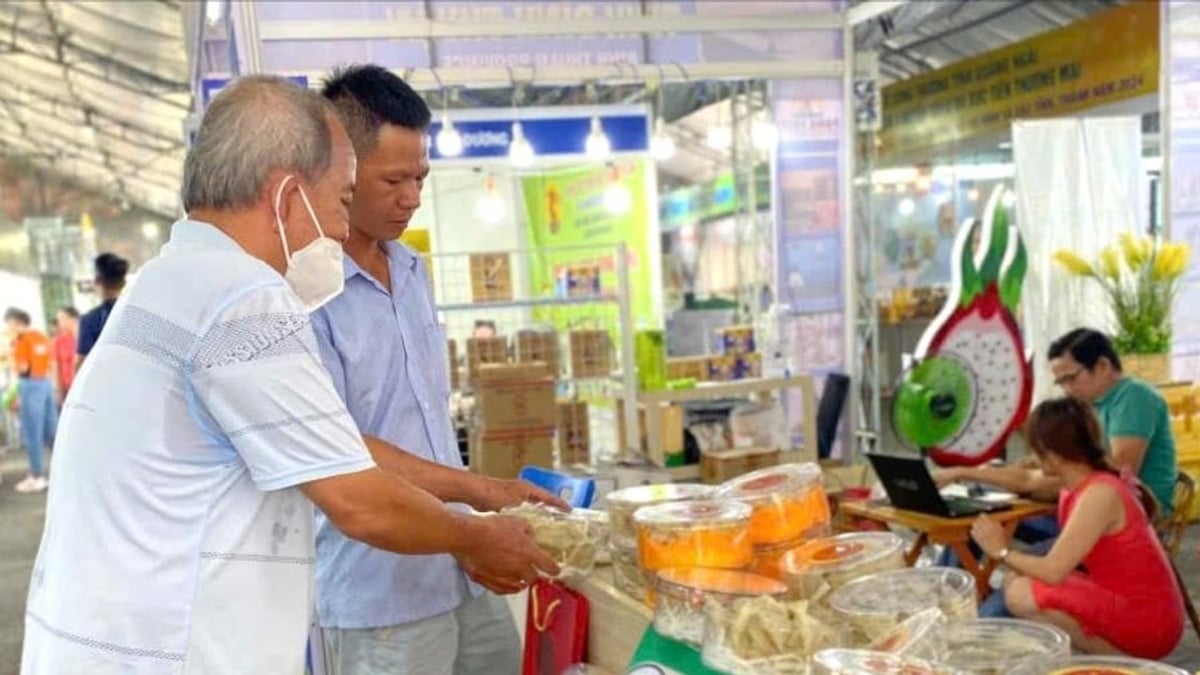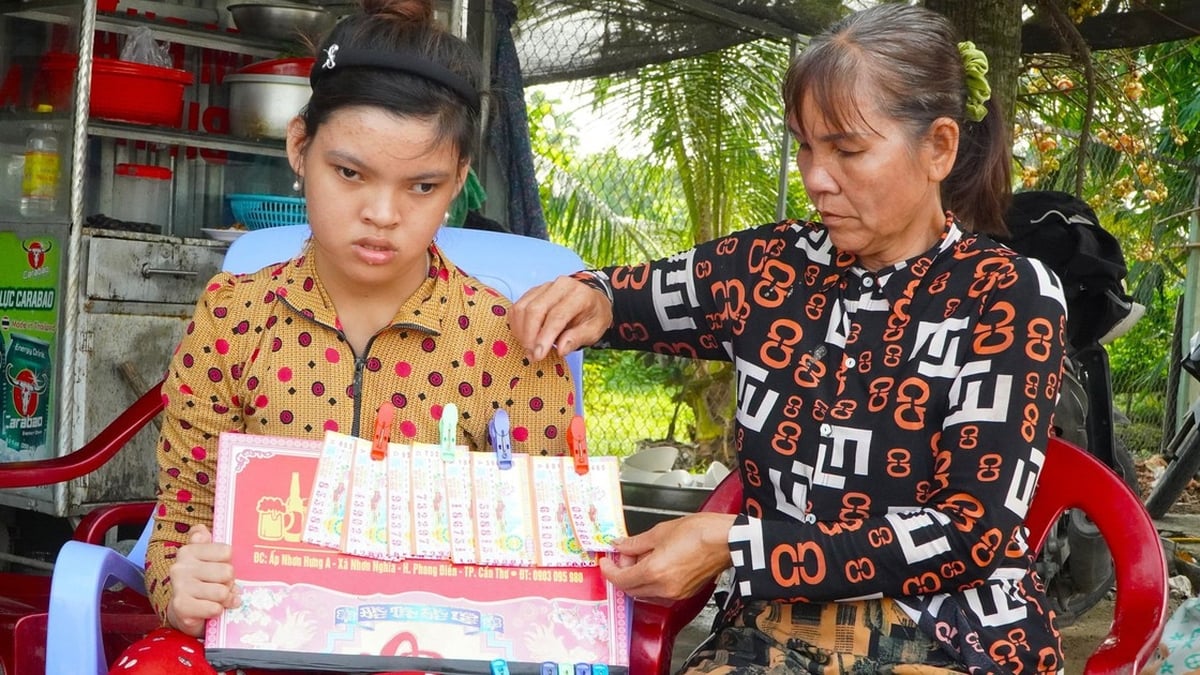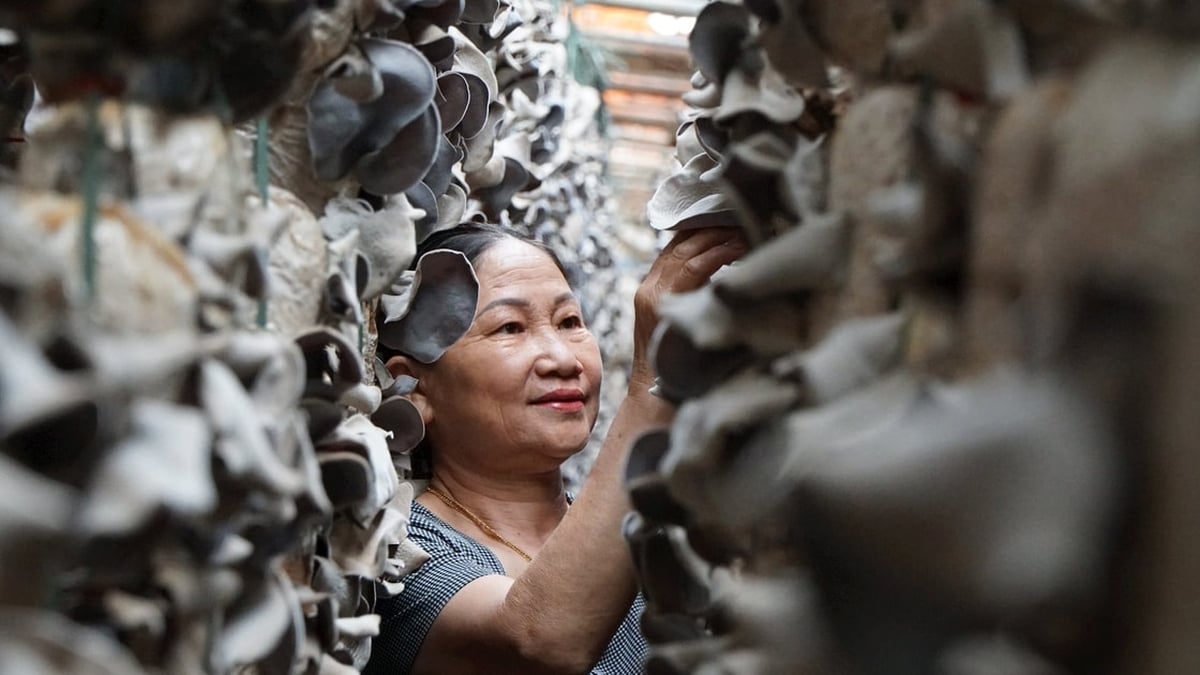Mrs. Bui Thi Thang (far left) and villagers perform gongs.
Since ancient times, the sound of gongs has been associated with important rituals in community life such as the festival of going to the fields, the new rice celebration, weddings or funerals. Every time the gongs resound, it is an opportunity for the Muong people to connect with their ancestors, with the gods and with each other. Mrs. Bui Thi Thang (79 years old) in village 12 - who has been attached to the art of gongs for more than 60 years, confided: "For us Muong people, gongs are the call of the forest, of the soul of the mountains, the way we tell stories, pray for luck and preserve our roots. Every time we play the gongs, we remember our ancestors, remember the time when our ancestors opened the land and built the village".
Xuan Du has over 30% of Muong ethnic people, and to this day, some villages still use gongs in community activities. Precious gong sets that are even hundreds of years old are still carefully preserved in many families and clans. Each gong set consists of many different pieces, with distinct pitches, arranged to create unique melodies that cannot be mixed. The sound is sometimes as loud as summer thunder, sometimes as soft as a stream flowing through the forest. During the campfire night, when Muong boys and girls put on their traditional costumes and play the indigenous gong tune, listeners seem to be lured into a distant memory, where each gong note evokes the depth of history and the strong connection in the community.
What is more valuable is that in Xuan Du today, the art of gongs is not lost but is gradually being restored and taught to the younger generation. Primary and secondary school students in the commune also have access to and learn to play gongs through extracurricular activities or school festivals.
Head of the Department of Culture and Society of Xuan Du Commune, Bui Duc Chinh, said: “We have determined that gongs are not only a traditional value of the Muong people, but also a potential for developing community cultural tourism in the coming time. Recently, the Center for Tourism Promotion and Culture, Cinema of the province has organized a training program, supporting costumes and props for community art groups and teams and gong artisans. This is a driving force for residential areas to promote the preservation of gong teams, and include them in community cultural activities.”
However, the preservation and promotion of gong cultural values in Xuan Du also faces many challenges. One of the major difficulties is the lack of the next generation of artisans. Due to the impact of modern lifestyles, many young people go to work far away, and not many young people are interested in gongs. The transmission of gong art still mainly relies on the enthusiasm of elderly artisans, without a clear support mechanism. To overcome this situation, the locality has been creating conditions for art groups and artists to participate in Muong gong art training courses; at the same time, it is researching and proposing policies on treatment and support for artisans who actively participate in preserving national culture.
It can be seen that in the general development picture of the province, with the goal of preserving and promoting the cultural identity of ethnic minorities, Xuan Du commune is a bright spot. Muong gong culture not only enriches the spiritual life of the community, but also opens up a sustainable direction in economic development based on cultural identity, becoming the driving force of innovation. The sound of gongs that has resounded in the past days, now continues to echo in the socio-economic development journey of the commune on a new journey.
Article and photos: Le Anh
Source: https://baothanhhoa.vn/ve-xuan-du-kham-pha-van-hoa-cong-chieng-nbsp-cua-nguoi-muong-256872.htm





































































































Comment (0)